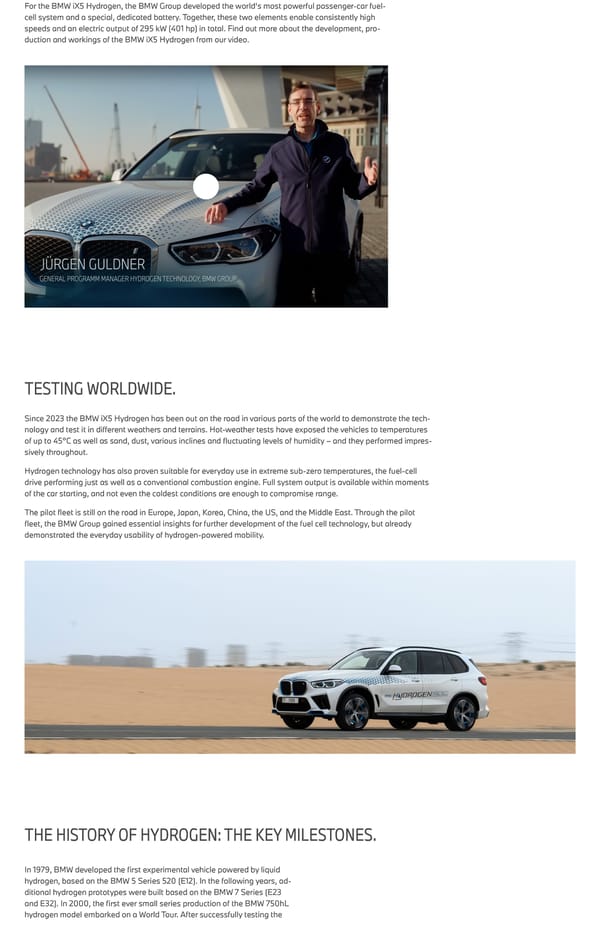For the BMW iX5 Hydrogen, the BMW Group developed the world’s most powerful passenger-car fuel- cell system and a special, dedicated battery. Together, these two elements enable consistently high speeds and an electric output of 295 kW (401 hp) in total. Find out more about the development, pro- duction and workings of the BMW iX5 Hydrogen from our video. Since 2023 the BMW iX5 Hydrogen has been out on the road in various parts of the world to demonstrate the tech- nology and test it in different weathers and terrains. Hot-weather tests have exposed the vehicles to temperatures of up to 45°C as well as sand, dust, various inclines and fluctuating levels of humidity – and they performed impres- sively throughout. Hydrogen technology has also proven suitable for everyday use in extreme sub-zero temperatures, the fuel-cell drive performing just as well as a conventional combustion engine. Full system output is available within moments of the car starting, and not even the coldest conditions are enough to compromise range. The pilot fleet is still on the road in Europe, Japan, Korea, China, the US, and the Middle East. Through the pilot fleet, the BMW Group gained essential insights for further development of the fuel cell technology, but already demonstrated the everyday usability of hydrogen-powered mobility. TESTING WORLDWIDE. THE HISTORY OF HYDROGEN: THE KEY MILESTONES. In 1979, BMW developed the first experimental vehicle powered by liquid hydrogen, based on the BMW 5 Series 520 (E12). In the following years, ad- ditional hydrogen prototypes were built based on the BMW 7 Series (E23 and E32). In 2000, the first ever small series production of the BMW 750hL hydrogen model embarked on a World Tour. After successfully testing the
 BMW Hydrogen Technology Overview Page 1 Page 3
BMW Hydrogen Technology Overview Page 1 Page 3